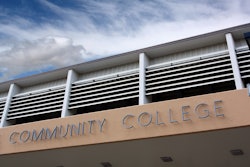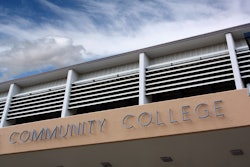Federal Student Aid Program Funding in Limbo
By Charles Pekow
Anyone wishing for immediate increases in student aid will have to wait at least a few more weeks. President Bush recently signed a continuing resolution funding the federal government through Nov. 18 at fiscal year 2005 levels. The resolution is based on the bill passed by the House of Representatives, because the Senate has not yet passed their version of the bill.
Most programs will continue at last year’s levels for the time being, but proposed increases (such as for the Fund for the Improvement of Postsecondary Education or the maximum Pell Grant) don’t take effect now. However, programs that the House of Representatives voted to terminate (such as Community Technology Centers) get no money, at least temporarily.
Two-Year Colleges Enrolled More Than 4 Million in 2004
More than 4 million Americans attended two-year schools a year ago. The Census Bureau’s figures for October 2004 show that an estimated 2.6 million attended full-time and 1.74 million part-time. The overwhelming majority (2.3 million full-time and 1.6 million part-time) attended public colleges.
The figures include an estimated 788,000 who had already completed two years of college. Of those in their first and second years, 1.2 million were under 20 years old; 1.05 million were between ages 20 and 24; 697,000 were between 25 and 34 and 585,000 were 35 and older.
New Relief Bill Waives “50 Percent” Rule
Among the many bills still pending in Congress to help hurricane victims lies one with a catch, according to the American Federation of Teachers. Sen. Michael Enzi, R-Wyo., chairman of the Committee on Health, Education, Labor and Pensions, teamed up with ranking member Sen. Edward M. Kennedy, D-Mass., and Sen. Jeff Bingaman, D-N.M., to offer a Hurricane Katrina relief bill that would allow the Department of Education to waive requirements in the hurricane zone regarding repayment of aid not used because of school interruption, allowing extra time to repay loans and increasing loan limits.
The bill would also allow the department to transfer Work-Study funds from one school to another and waive the matching requirement this academic year for students who transfer because of the storm.
But the bill also includes a measure to encourage distance learning by waiving the 50 percent rule — which bars a school from offering federal financial aid if more than half of its classes are offered via distance education — for any institute of higher education in the country. Since students could attend from anywhere, the waiver is not limited to students and schools in the hurricane zone. And unlike the other student aid waivers, this provision has no time limit. “If you are going to talk about doing that, we should limit that to those affected and sunset it,” says Gabriella Gomez, AFT’s chief lobbyist on higher education issues.
Two-Year College Students Defaulting Less
Loan default rates among two-year college students are dropping, but they remain higher than those for other college students. The Department of Education reported that the overall default rate on Direct Loans and Federal Family Education Loans fell from 5.2 percent in 2002 to 4.5 percent in 2003. But for public community colleges, 5.8 percent of students defaulted in fiscal year 2003; however, that default rate slid in recent years from 7.2 percent in 2001 and 6.7 percent in 2002.
Among those in proprietary two-year schools, 10.8 percent defaulted in 2001, dropping to 10.1 percent in 2002 and 7.9 percent in 2003. Among those attending nonprofit two-year schools, 9.3 percent defaulted in 2001 and 9.7 percent in 2002, dropping to 7.9 percent in 2003.
In a press release, the Education Department credited the drop in part to its “enhanced management and oversight of the federal loan programs,” including its stepped-up education of students about college costs and repayment options. It didn’t mention improving economic conditions.
Public, Private Degree Rates Vary Widely
Slightly more than 40 percent of public postsecondary schools and slightly more than half of for-profit colleges offer an associate degree as their highest degree. But only 6 percent of private nonprofit colleges do, reports the National Center for Education Statistics in its annual report, “Postsecondary Institutions in the United States: Fall 2004 and Other Awards Conferred: 2003-04.”
For-profits do a much larger proportion of their teaching in two-year programs than other schools. In the 2003-2004 academic year, all Title IV institutions awarded 123,324 associate degrees, 5.6 percent of the total degrees such schools awarded. While for-profit colleges awarded 39,605 associate degrees, or 35.5 percent of all degrees awarded, public colleges gave out 49,266 associate degrees — 3.8 percent of all their degrees — and nonprofits awarded 34,453 — 4.3 percent of their degrees.
The report also found that the cheapest way to attend college was to live with your family and enroll in an in-state public community college. Total costs of such education averaged $6,346 in the 2004-2005 school year.
In the most recent academic year, NCES counted a total of 2,791 Title IV colleges that offered associate degrees — 1,337 public, 685 non-profit and 769 for-profit. Of the total number, 1,258 offered the associate degree as their highest degree.
© Copyright 2005 by DiverseEducation.com
















